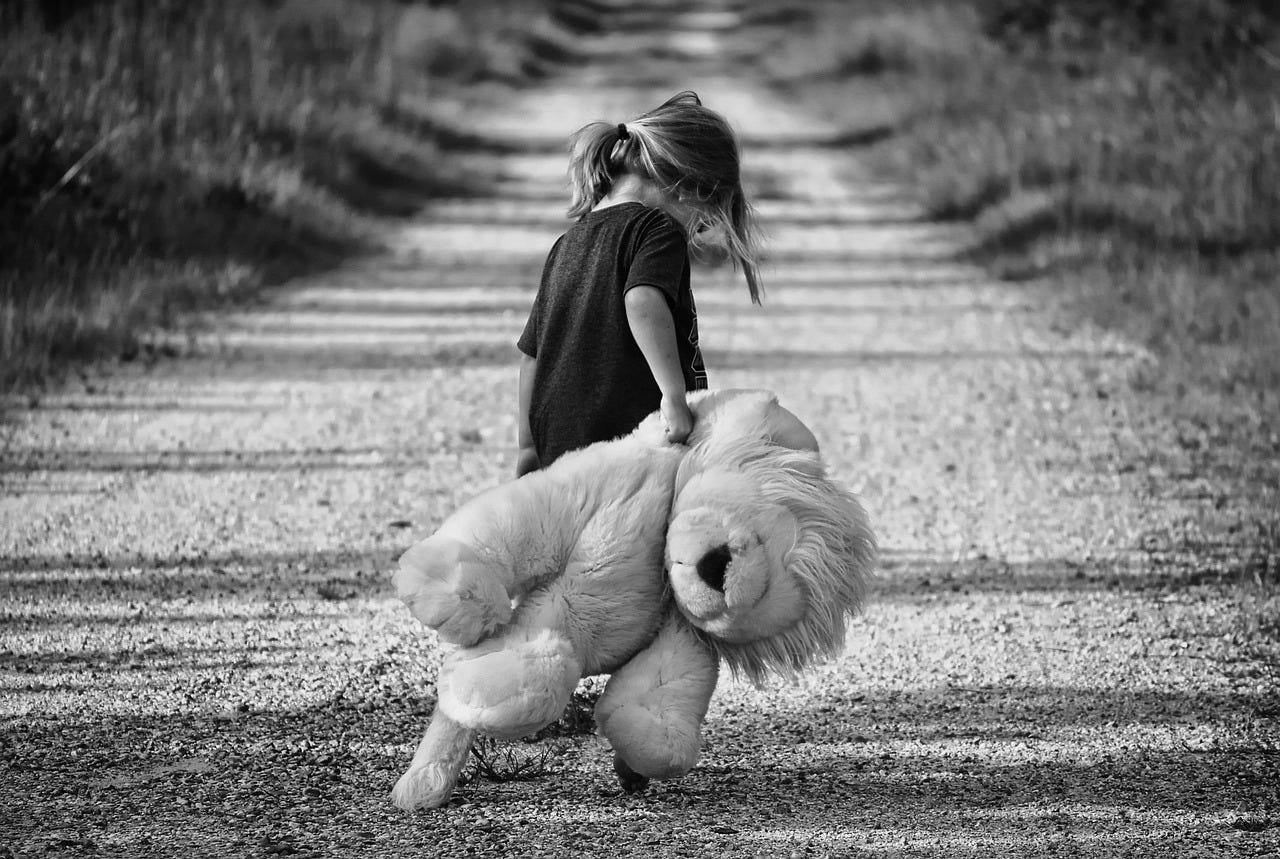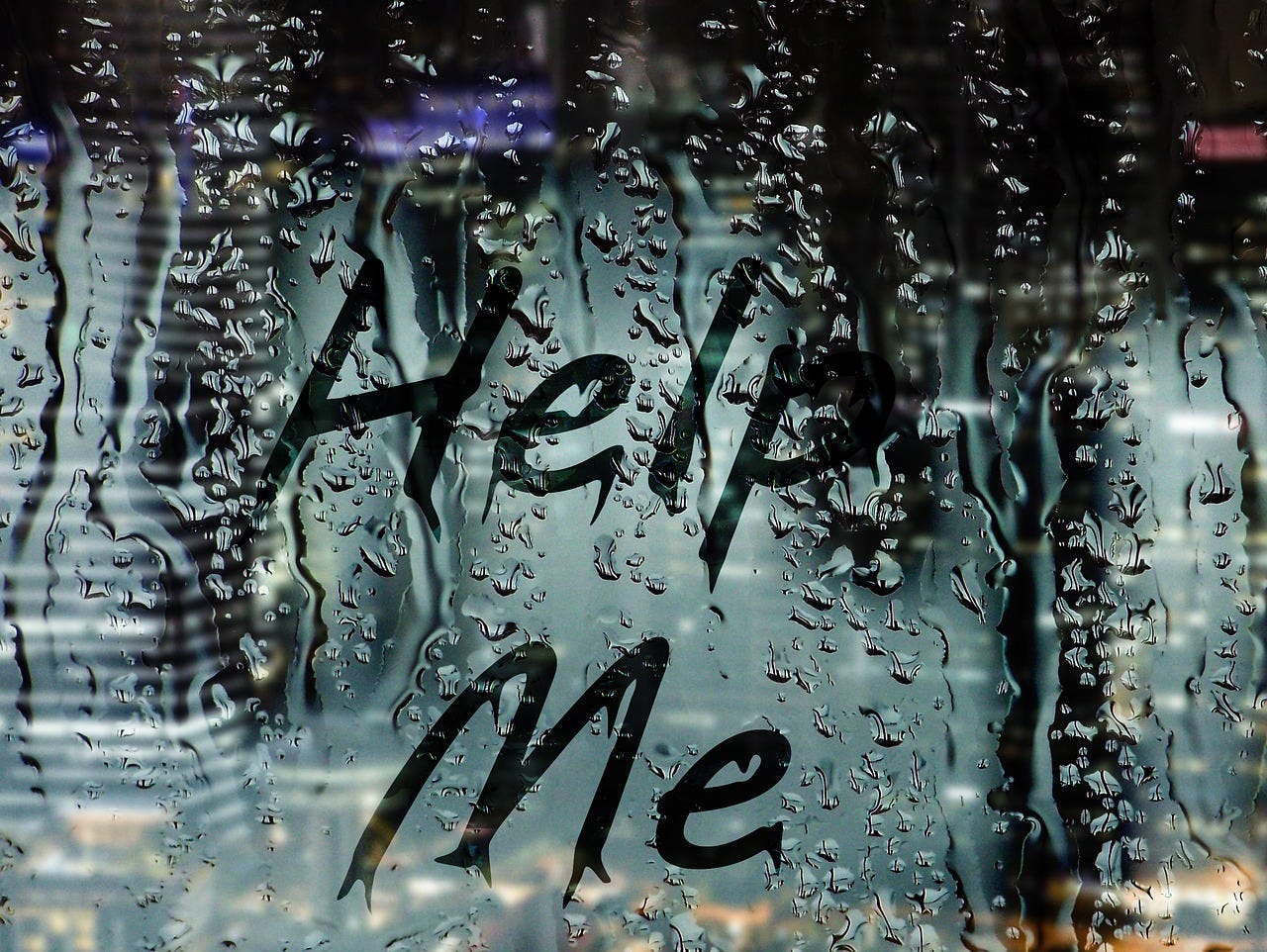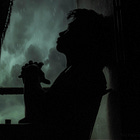Fatal Maternity (Part 5): Child Maltreatment
Analyzing the cycle of child abuse that can lead a mother to become the ultimate monster.
This series started with filicidal mothers who lost themselves to mental illness. Who, in the chaotic midst of a psychotic episode or mental breakdown, killed her children, only to regret it in the aftermath. Women who were good, devoted mothers who thought they were doing what was best for the children, no matter how outlandish the reason.
And now, we approach the final two motives. While Philip J. Resnick originally said in 1969 that “Child Maltreatment” didn’t typically mean the death was intentional, the cycle of abuse from a mother to her child is an inevitable escalation that can only end in homicide if there is no intervention.
And sometimes, as we’ve come to know since 1969, it is intentional.
So, how does a mother become a monster?
Several studies link childhood abuse and neglect to those who go on to become abusers. A 1989 New York Times article cited that one-third of abuse victims go on to become abusers. A few other articles quote this, though I couldn’t find the original source for this statistic. Dr. Richard Krugman, a pediatrics professor at the University of Colorado Medical School and director of the C. Henry Kempe Center for Prevention and Treatment of Child Abuse and Neglect in 1989, told the NY Times:
“There are substantial numbers of men and women who were abused as children, but who are not themselves child abusers, drug abusers, criminals or mentally disturbed.”
This is an important distinction to make. Abuse survivors don’t deserve to carry this stigma. Most learn to manage the trauma, how to regulate emotions and self-parent, and learn to navigate adulthood with healthy coping mechanisms.
What we see when we look at mothers who commit filicide as a result of maltreatment are ones who never learned all of the above, be it due to the severity of mental illness, the lack of a positive support system, an addiction, or lack of access to proper resources. These women do not represent the majority of abuse and trauma survivors, but chances are, they endured childhood adversity that led them to carrying on a violent and vicious cycle.
A 2013 study titled “Child Maltreatment Victimization and Subsequent Perpetration of Young Adult Intimate Partner Violence: An Exploration of Mediating Factors” (Lina S. Millett and others), explores the links between childhood maltreatment and later behavioral issues like addiction, juvenile criminal behavior, and carrying on the abuse cycle. It quoted several other studies which found that:
“Women have been found to have a higher risk of IPV (intimate partner violence) perpetration as a result of early problems in family relations (Magdol et al., 1998), and adult alcohol use and hostility mediated the relationship between CAN (child abuse and neglect) and IPV for women in White and Wido’s (2003) study.”
Another study, “New Directions in Child Abuse and Neglect Research”, by Joseph J, Feit M, and others, explains how parents and caregivers are “co-regulators” for emotions, physiology, and behavior for newborns. As children get older, they learn to regulate themselves.
However, an abusive parent throws off that co-regulator dynamic and stunts a child’s growth. Any stress that becomes overwhelming to the child makes them lash out and misbehave. A lack of emotional regulation is what they live with, hence it’s all they know.

A Child’s World
Interestingly, this same study explores a child’s ecologies and how they influence one another. The four categories overlap and create what becomes the basis for how the child interacts with the world.
Ontogenic development “reflects factors within the individual that influence the achievement of competence and adaptation.”
The microsystem, the “immediate context” of the child’s world, is where they experience abuse and neglect. Basically, their family. Other things, like marriages or other relationships, may also impact this.
The exosystem co-exists with the following macrosystem in which cultural and societal factors “contribute to and maintain abuse or neglect.” It includes things like employment, social services, and neighborhoods.
The macrosystem includes different cultural attitudes towards corporal punishment or the value of children and how they should be treated.
All of this comes together to form how a child interacts to form long-term relationships. When they grow up with a parent who is unable to co-regulate, it forms a dysfunctional cycle they are prone to handing down to their own children should they choose not to break it. Many abuse survivors learn to heal, self-regulate, and end the cycle.
Those who don’t, run the risk of becoming the very thing they loathe. That one-third of victims who turn into perpetrators pass the abuse and neglect onto their own children, which could potentially send them down a path of violent and frightening escalation. The abuser is trying to control the environment in which their children live in the same way their own abuser controlled their world.
Alternatively, these abusers may have no control at all and, lacking that emotional regulation, simply lash out with extreme aggression when their capacity to handle stress is overwhelmed. Dr. Peter Sidebotham, an emeritus professor of child health, discusses this in his 2013 paper, “Rethinking Filicide,” saying:
“One element that seems to be frequently observed in different forms of maltreatment (fatal and non-fatal, physical and emotional, and against children and intimate partners) is that of control.”
Breaking it Down
Dr. Peter Sidebotham further broke down child maltreatment deaths into six different categories.
“Overt filicide” occurs when a parent/caregiver violently kills a child in “circumstances of excessive or disordered control.” This could include the murder of other family members, and/or the suicide of the killer.
“Covert filicide” is a child murder carried out with less violent means, like abandonment, smothering, or deprivational abuse.
“Child homicide” is also a murder done in a moment of disordered control, but the perpetrator is someone other than the parent/caregiver.
“Fatal Physical Abuse” is “an impulsive violent outburst” by a parent/caregiver with little or no self-control that results in the murder of the child.
“Fatal Assaults” is the same, except done by someone other than the parent/caregiver.
“Maltreatment-related Deaths” occurs where the child dies via non-violent means like neglect.
Another study, titled “Characteristics, Classification, and Prevention of Child Maltreatment Fatalities” (James E. McCarroll, PhD, and others) suggests three types of fatal neglect: supervisory, medical, and deprivation of needs. It cites a 2001 report to say neglect accounts for thirty to forty percent of maltreatment deaths. Supervisory neglect makes up sixty-one percent of these cases.
Covert and maltreatment-related deaths sound the same, but covert would include some element of less-severe violence than overt, whereas maltreatment focuses more on the severe lack of care resulting in the child’s death.
Unlike other forms of filicide, maltreatment fatalities come with signs and an ominous build up to the mother finally snapping. Abuse happens in cycles, escalating in violence with each go round until it becomes fatal. Sadly, children can’t simply leave these abusive relationships. They’re trapped in the home with the parent who terrorizes them daily unless someone intervenes. It’s difficult enough for an adult to escape an abusive relationship or marriage. For a child, it’s almost impossible.

The Maltreatment Filicide Cycle
In a 1988 study, “Fatal maltreatment by mothers: A proposed framework”, Jill E. Korbin studied a group of nine incarcerated women who had murdered their children, and “provided warning signals to professionals and to members of their personal networks (kin, friends, neighbors) by alerting them to the abusive incidents.” Korbin notes:
“The fatal incident was not a one-time assault, but the exit point of a continuing pattern of abusive interactions that was maintained by the woman’s ability to explain, rationalize, and minimize the abuse to herself and to her network.”
The nine women each followed a similar build up to the murder. Four of the women said they were the sole perpetrator in their cases, while her male companion was such in three cases, including two biological fathers and one boyfriend. Both parents were involved in one of the murders. The final case saw the child starved and dehydrated, dying of undetermined causes. Only the mother was charged despite both parents being in the home.
Korbin’s proposed framework makes note of Resnick’s classification of fatal maltreatment and how the deaths are unintentional, noting for her study that she includes both intentional and unintentional maltreatment deaths in this framework, which begins in the roots of the mother-child interaction.
The Framework
Negative Parent-Child Interactions
This interaction typically takes root in the mother’s own negative relationship with her parents. Korbin notes that the childhoods of the studied mothers were “fraught with physical, sexual, and emotional maltreatment.” It distorted their views of their own children.
“They pictured their deceased children as having a range of health problems and behavioral difficulties that made them difficult to care for and manage. Those who had been separated from their children experienced difficult periods of reunion with them.” (Korbin, 1986, 1987.)
Five of the seven women living with males at the time were victims of partner violence during this period. Financial stress was also a repeating factor.
If we integrate the earlier discussion of emotional regulation, we can see the mother overextending her capability to self-regulate her own emotions while co-regulating with that of her child. Her threshold of stress management became overwhelmed and she lashed out at the child when she felt she had nowhere else to turn.
She begins to view the child as part of her problems, not as a human being who needs love and nurturing, when she feels inadequate to meet the child’s emotional needs. This is the immediate context of the child’s world, the “microsystem”, that feels unsafe and unstable.
Early on, the mother is trying to maintain control of the environment. If she is also stuck in an abusive relationship with her partner, she has no control – her partner, the abuser, does. Her only control would be over the child.
If she isn’t in an abusive relationship and is the main abuser, then something in her life still feels out of control, be it her own childhood trauma causing her inner turmoil, or financial stress, or marital problems. The exosystem and macrosystems (the cultural and societal factors and attitudes about children and punishment) could also come into play at this stage of the cycle. She’d raise and punish her children according to what is normal for her.
Korbin notes it is here where we start to see “a repetitive pattern of abusive incidents from which internal and external factors rendered them incapable of extricating themselves.”
Signal/Plea for Help
The 2020 Child Maltreatment Report noted that of the 902 fatalities they had on file, 80 of the families had been known to the agency in the previous five years. It adds that “12 of the 208 Agency File fatalities were removed from home and subsequently reunited with their families prior to their death.”
With abusive behavior comes a repetitive pattern. Korbin notes that it’s extremely difficult to predict which cases will become fatal and which ones won’t, as abusers are notoriously unpredictable. She quotes Resnick’s 1969 study which states that in forty percent of child homicide cases, the parent had “seen a psychiatrist or physician shortly before the fatality.” Korbin adds that the children had likely also seen a doctor before the homicide.
The initial abuse of the child didn’t leave bruises, though it soon escalated to marks being left on the child’s body. Suspicious bruising on a child is it’s own silent cry for help. Korbin described some of the cases:
“The first had spanked the child on previous occasions and had tried to frighten her into compliance. The second not only had spanked her son, but also had set up ‘accidents,’ hoping that he would kill himself, but that she would appear to be blameless.”
The child’s ecologies will begin to feel like they’re closing in on them, making the world inside their tumultuous home seem small and terrifying. They begin adapting survival mechanisms to cope, learning how to people-please and attain a level of expected behavior in order to avoid punishment. The mother’s behavior will only escalate if pleas of help go unseen. According to Korbin:
“These warnings and pleas for help went unrecognized and therefore unheeded. This was a pivotal stage in the progression towards the fatality. The women could exit the cycle into intervention (that might or might not be successful), or they could engage in denial that contributed to a continuing pattern of abuse and culminated in the fatality.”

Denial and a Continuing Cycle of Abuse
Even if the mother discusses abusive incidents with others, she will often minimize it to convince herself and others that her behavior isn’t abusive, and that she is a good mother. Especially if doctors or psychiatrists don’t intervene at this stage, it only enables her behavior and lets her escalate. She might even visit different doctors for her child’s injuries to avoid anything being reported.
Korbin says that this denial may extend into the mother blaming people around her.
“Denial of the seriousness of abuse also involved blaming others. Injuries to one woman’s son that resulted in a court-ordered removal were discovered during a visit with the biological father. She viewed the abuse report as little more than harassment by her ex-husband and minimized the injuries to her son.”
Whether the mother’s circle didn’t realize how serious her behavior was, remained in denial of their own, or didn’t know what to do about it, the child remained at the frightening whims of its mother. The child stays in its increasingly dangerous microsystem while being let down by the exosystem outside of the home. A child will increasingly learn survival mechanisms, but also coping mechanisms, which could manifest into negative behavior of their own as a way of rebelling or wordlessly asking for help.
Continuing Cycle
The abusive woman, at this stage, has learned to minimize her abusive behavior and how to manipulate others to do the same.
This can also mimic the beginning stages of the cycle. The child may have been removed from her care and returned, only for the mother to resume the abuse. The reunion period is one of extreme danger to the child. Korbin noted that in multiple cases, “it was only a matter of weeks and months between the return of a child and the fatality.”
The child’s world has become unbearably unstable, especially if they are continually removed and reunited with their mother only to fall back into abusive hands once more. This impacts their ability to adapt to changes and teaches them that their world is unsteady, unreliable, and that no one sees them.
The Fatality
The moment the mother goes over the edge and murders her child is the moment she cannot minimize or explain away anymore. The child has been let down in the worst way, and the system that enabled the mother, knowingly or not, is revealed. She can no longer deny her behavior. In scrambling to control her world, she has slipped. Her emotional dis-regulation has reached a fever pitch. Whether she meant to kill the child or not becomes irrelevant.
For the child, it is the darkest hour of their young and tragic life. It is also the end.
The Aftermath
Guilt and stigma follow these women through their arrest, trial, and prison life. Korbin explains that these women fall into a stage of re-evaluation in an attempt to dissect their lives and how it came to this. She notes:
“Details surrounding the fatality, including the precise cause of death, became the focal point for subsequent investigation and prosecution. The focal point for the women was not the details of the crime that resulted in their incarceration, but a reexamination of their lives and how they came to commit the most heinous of crimes.”
Final Thoughts
Early intervention is, of course, the key to preventing these tragedies. The U.S. Advisory Board on Child Abuse and Neglect says that five children a day under the age of five die from fatal abuse and neglect. That number is horrifying, considering it doesn’t include children over the age of five. That stat was quoted in studies ranging from 1995 to 2019, which means it is one that has held steady over the years.
The University of Warwick in the UK said that between 2011 and 2014, there were “197 fatal cases (207 children) out of 293 cases reported to DfE. 47 percent were maltreatment related deaths. 20 percent fatal physical abuse. While neglect is rarely the direct cause of death, evidence of neglect is found in 48% of all cases.”
The fact that it is so hard to determine which abuser will become a killer makes it all the more important for intervention to happen the moment someone knows a child is being abused. Most times, children are too scared to speak up for themselves. They still need someone to do it for them when their own mother fails and silences them. That need for co-regulation, nurturing, and love remains, even in the chaos of their mother’s violence.
They need a voice at a time when they cannot speak for themselves.
Relevant cases:
My Substack is all free with paid subscriptions being optional. I also have a Ko-Fi for one-time donations. Any support goes towards creating more content and books and furthering my writing career. All support, financial or not, is appreciated!
Sources
A Meta-Study of Filicide: Reconceptualizing Child Deaths by Parents by Diane Jackson, 2011







